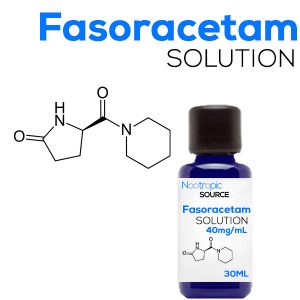


Fasoracetam (NS-105, LAM-105) was originally developed for the treatment of Alzheimer’s.
A member of the family of Racetam, a class of compounds known for their cognition, improvement in properties, It also shows promise as an antidepressant and anxiolytic.
Dr. Hakonarson, who specializes in the genome of medicine, is studying drug utility as a drug of ADHD for a subset of specific genetic populations.
Fasoracetam works on three different types of receptors in tandem: cholinergic, GABA and glutamate.
These receptors are all related to education and retention of new memories. This was proved in the laboratory.

Fasoracetam improves overall ht during an attack of anxiety and apathy, which, as much as lack of ability, can stand in the way of achieving full potential.They are also frequent problems for patients diagnosed with ADHD, which explains the interest in studying its effects on this disorder.
Fasoracetam allows you to teach helplessness. In the past, the trials that received the drug were significantly less likely to remain immobile when immersed in water than those that were not. They were also more motivated to save themselves from being ruthless by the current on their feet.
While human studies are still conducted in this area, it has been established to increase the “number of GABAB receptors in the cerebral cortex of the rat without affecting the binding properties of adrenoceptors and 5-HT2 receptors.”
Each dose of Fasoracetam – acts more efficiently and helps alleviate depression and anxiety, like the latter. The mechanism of its action, not like Prozac’s.
It also does not affect the assimilation of monoamine oxidase or its circulating concentration in tissues. His short term security was created, but as yet there is no certainty he will be able to work in long-tem perspective as Piracetam or Aniracetam.
Doses of Fasoracetam
Now, the use of Fasoracetam is limited as an addition to Nootropics. It is quite difficult to track and relatively expensive.
You can buy it from several suppliers of compound Nootropics research, but remember that it can still be approved for human use in the US, and it carries some inherent dangers.
Its antidepressant effect is best known in large doses and the standard has not yet been agreed upon. In human trials, 100mg a day is given to subjects without observed effects, but some psychonauts use only 10 mg per day, sublingually.
